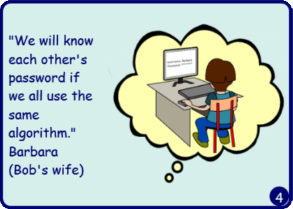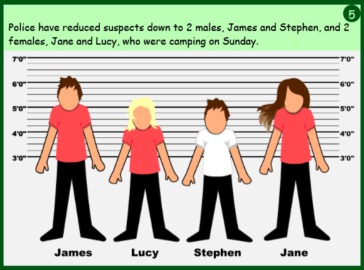Computing Mysteries
How can Digital Mysteries help with the new KS2 and KS3 computing curriculum?
As you will see from our About Us, our background is computing science. That, combined with our research with Newcastle University into how technology can support learning, is why we’ve dedicated a lot of time to creating tasks for computing.
We’ve focused on helping teachers explore the concepts behind programming with their students, and also with digital literacy.
Computational Thinking
You can read our more extensive look at this term here but to summarise, we believe it is not just about computer software, but also the concepts we use to solve problems in our daily lives.
One of our main goals was to make the content relevant and relatable. As you'll appreciate, it’s easier to introduce new problems through first using well-known concepts that students feel comfortable about.
When something is familiar, they get on with the task and enjoy solving it, but are only later told how it is relevant to a certain point of the computing curriculum.

An example from each Key Stage
 KS2 - Bob’s Algorithm points to ‘use logical reasoning to explain how simple algorithms work’ by having a family (Bob, Barbara, Ben and Bella) solve the dilemma of forgetting their passwords all of the time.
KS2 - Bob’s Algorithm points to ‘use logical reasoning to explain how simple algorithms work’ by having a family (Bob, Barbara, Ben and Bella) solve the dilemma of forgetting their passwords all of the time.Bob thinks up a simple algorithm then explains it to the family, which the pupils follow along with too. Amongst background information and red herrings, seven simple steps need to be followed.
There’s a mixture of benefits including refreshing understanding of areas such as algorithms and variables plus exploring the behaviour of an algorithm and predicting its output. There’s an extra element of digital literacy here, with the focus on keeping personal information private.
 KS3 - The Fire of Faydale, points directly to ‘understand simple Boolean logic [for example, AND, OR and NOT]’ with an exciting “whodunit” about a fire which has happened in a camping site.
KS3 - The Fire of Faydale, points directly to ‘understand simple Boolean logic [for example, AND, OR and NOT]’ with an exciting “whodunit” about a fire which has happened in a camping site.
Students learn about a mysterious detective who writes his notes in Sherlock-style form using these terms, and they must help him come to a conclusion about who may have started the fire.
In order for them to form an argument, they must understand and interpret Boolean logic (the detective's notes). It is only after this (or however you prefer) that they are then alerted to the fact that this is used in programming. The medium and hard levels add extra information such as helping students understand how the same statement can be represented differently with the use of the ‘NOT’ Boolean operator.
More information
To explore all of our computing mysteries, you can view our collection here. For more information please email This email address is being protected from spambots. You need JavaScript enabled to view it. or visit our This email address is being protected from spambots. You need JavaScript enabled to view it..
